Wiltshire Horn Society ear tags are absolutely essential to prove the pedigree of your sheep. They’re the unique thing that links the sheep in the field, to its pedigree in the Flock Book of the Wiltshire Horn Sheep. If you’re buying sheep, please be certain that they are properly tagged, if an animal loses a tag, please replace it, as without the right tags their pedigree can’t be proven. Every year the Secretary receives queries about Wiltshire Horn sheep without ear tags and without the right ear tag data, unfortunately these sheep just cannot be identified. It helps everybody if the correct ear tags are applied and maintained. The Society has just published an updated Ear Tagging Notice for 2020 and a copy of it has been sent to every member.
Change to Order of WHSS Tag Data in Flock Book
From 2020’s registrations onwards, Society ear tag data will be recorded in the Flock Book as :
Flock Number / Year of Birth / Individual Number
Instead of the old sequence Flock Number / Individual Number / Year of Birth
The intention is to make it easier to enter registrations through the Online Flock Book, as the Flock Number and Year of Birth can be pre-filled by the system, as well as members’ UK flock number.
This means that only the individual numbers for the WH tag and the DEFRA tag will need to be entered by the member. As always, these may be the same or different depending on personal preference.
Should you need to make late registrations through the Online Flock Book, please just get the date of birth correct, tell the Secretary it’s a late registration and the year of birth on the WH ear tag will be corrected in the office.
If you choose to post your registrations on the paper forms or to email in a spreadsheet, please just enter the WH tag data in the correct new sequence :
Flock Number / Year of Birth / Individual Number
If there are any queries, please contact the Secretary.
WHSS Tag Data on Ear Tags
In recent years it has become noticeable that manufacturers are producing tags which suit the requirements of their machines and their ability to fit everything onto a tag, rather than being exactly what we need. They do the job the easiest way they can for themselves. And different machines will have the ability to increment individual numbers in different places, dependent on the shape of the tag – and there are a lot of shapes now. As a result, our physical ear tags are gradually drifting away from the old “standard”.
There are a few examples here of ear tags that have been approved by the Council.

In this first one, the last two digits of the year (18) are already printed next to the flock number, with the individual number on the other side of the tag. Here the individual number is being used for the WHSS and for DEFRA

In the tag on the left, the year is separate from the flock and individual number. This tag is showing Society information only and would be in addition to double tagging requirements from DEFRA.

The example right is the nearest to the previous Society standard but even that isn’t exactly how it was defined in the previous Ear Tagging Notice.
Summary
The key message here is that the way that ear tag data is being recorded is changing. If your manufacturer can provide tags with the sequence of data that the Society needs, that would be excellent. Otherwise, ear tags of the style illustrated here are acceptable to the Council. The important thing is that it must be possible to identify the flock number, year of birth and the individual number without confusion.
